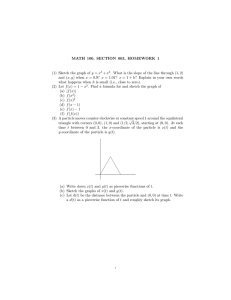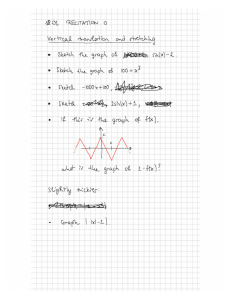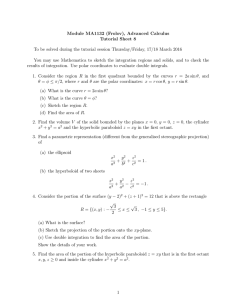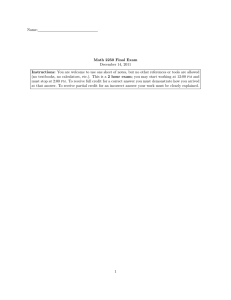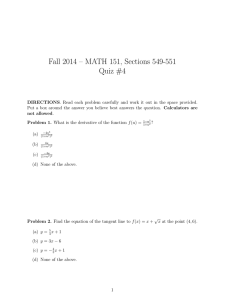M I T (
advertisement
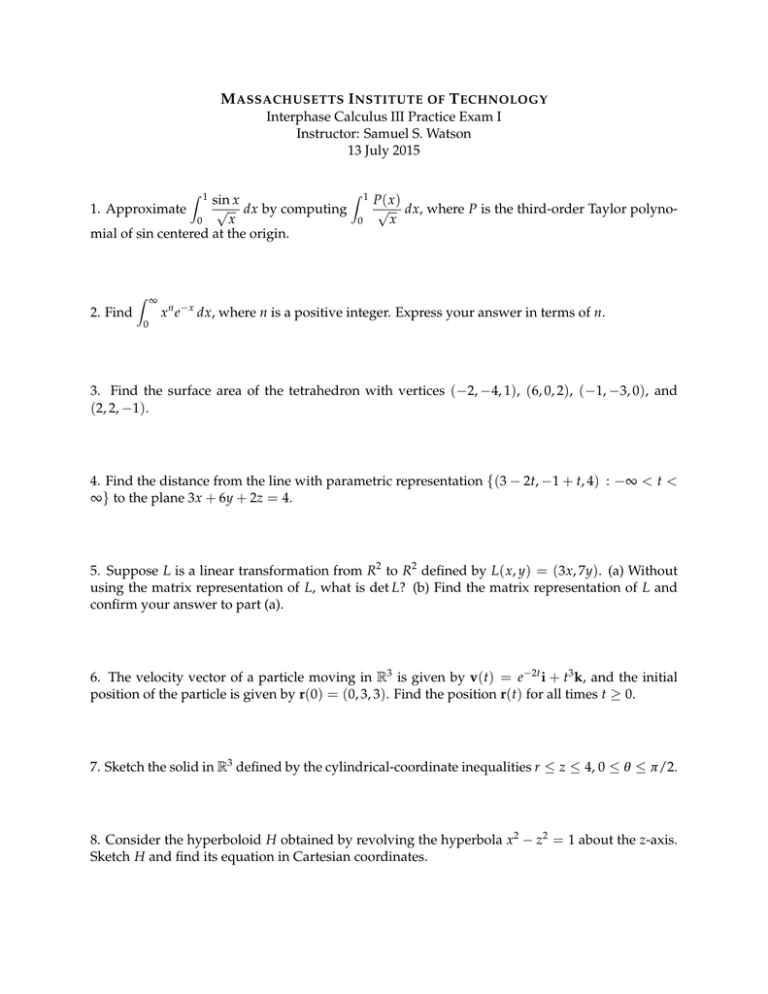
M ASSACHUSETTS I NSTITUTE OF T ECHNOLOGY
Interphase Calculus III Practice Exam I
Instructor: Samuel S. Watson
13 July 2015
1. Approximate
Z 1
sin x
√
dx by computing
x
mial of sin centered at the origin.
2. Find
Z ∞
0
0
Z 1
P( x )
√
0
x
dx, where P is the third-order Taylor polyno-
x n e− x dx, where n is a positive integer. Express your answer in terms of n.
3. Find the surface area of the tetrahedron with vertices (−2, −4, 1), (6, 0, 2), (−1, −3, 0), and
(2, 2, −1).
4. Find the distance from the line with parametric representation {(3 − 2t, −1 + t, 4) : −∞ < t <
∞} to the plane 3x + 6y + 2z = 4.
5. Suppose L is a linear transformation from R2 to R2 defined by L( x, y) = (3x, 7y). (a) Without
using the matrix representation of L, what is det L? (b) Find the matrix representation of L and
confirm your answer to part (a).
6. The velocity vector of a particle moving in R3 is given by v(t) = e−2t i + t3 k, and the initial
position of the particle is given by r(0) = (0, 3, 3). Find the position r(t) for all times t ≥ 0.
7. Sketch the solid in R3 defined by the cylindrical-coordinate inequalities r ≤ z ≤ 4, 0 ≤ θ ≤ π/2.
8. Consider the hyperboloid H obtained by revolving the hyperbola x2 − z2 = 1 about the z-axis.
Sketch H and find its equation in Cartesian coordinates.
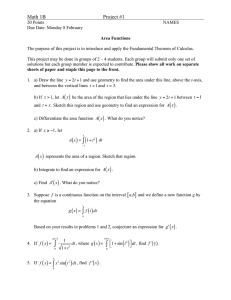
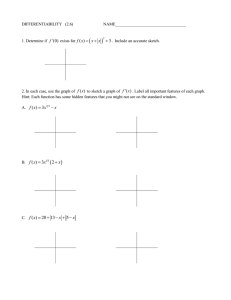
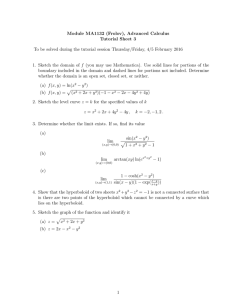
![Student number Name [SURNAME(S), Givenname(s)] MATH 100, Section 110 (CSP)](http://s2.studylib.net/store/data/011223978_1-39c9c5d89d57d753749fab28e5be00df-300x300.png)
